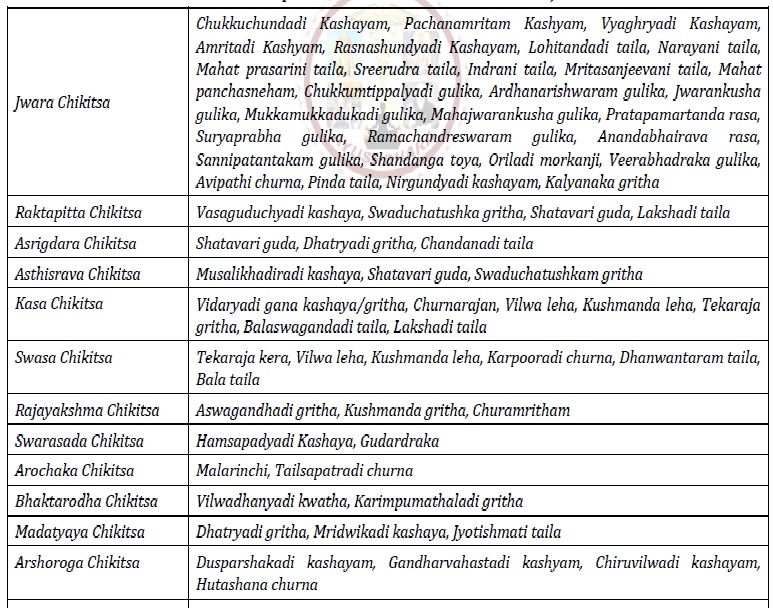Chikitsamanjari - A Unique Encyclopedia of Keraliya Ayurveda
DOI:
https://doi.org/10.47070/ayushdhara.v10i5.1373Keywords:
Chikitsamanjari, Ashtavaidyas, Keraliya Ayurveda, Panchakarma.Abstract
Chikitsamanjari has been used traditionally as a handbook for clinical practice by the renowned Ayurveda physicians of Kerala. Chikitsamanjari can be considered as a true representative of the Kerala tradition of Ayurveda and plays a pivotal role in keeping the Kerala tradition of Ayurveda alive. The book can be considered as an abridged version of Brihath trayees, explaining in brief about the major diseases encompassing the six branches of Ayurveda, excluding Rasayana and Vajikarana. Based on internal and external evidences, it can be inferred that the author of the text might be one among the Ashtavaidyas. The first edition of the text was based on two manuscripts obtained from the disciples of two Aryavaidya traditional families in Kerala. A combined version with commentary, by Sri. Sreeman Namboothiri was published by Vidyarambha Publishers, Mullakkal, Alappuzha, in 1990. Chikitsamanjari Part I and II together contain 67 titles, with the first 65 titles describing different diseases and their treatments and the last two titles giving a concise note on Dharavidhi and Manavidhi respectively. Among the Birhat trayees, the book has a greater inclination towards Ashtanga Hridaya. This book contains more than 1000 drugs and formulations, including 164 single drugs. Locally available drugs have been described extensively and are mentioned in their vernacular names. Most of the formulations are simple, cheap, easily available and easy to prepare even at home like Mukkudi and Swarasa kalpana. Newly emerging diseases like Bhaktarodha, Somaroga and Asthisrava and existing conditions of growing prevalence such as Sthaulya, Karshya are explained. Much importance has been given to simple procedures like Dhara, Abhyanga, Pinda sweda and Tapa sweda rather than complex procedures like Vamana, Vasti and Sastra karma. Among Panchakarma, Virechana yogas are elaborately explained and no Yogas for vasti are explained. Urovasti is indicated as a procedure in functional conditions like Arochaka, Bhaktarodha and Chardi. Modifications of Swedana karma like Kshira bashpa, Tavidu kizhi and Tapasweda using Arkapatra and Panasapatra have been mentioned. Even though Chikitsamanjari is an authentic text that describes Kerala Ayurveda, it has got certain demerits and limitations. Truly, Chikitsamanjari is a textbook of Ayurveda, which has considered the nuance of treatment from all the angles of simplicity, availability, efficacy and cost effectiveness.
Downloads

Downloads
Published
Issue
Section
License
Copyright (c) 2023 AYUSHDHARA

This work is licensed under a Creative Commons Attribution-NonCommercial-ShareAlike 4.0 International License.


